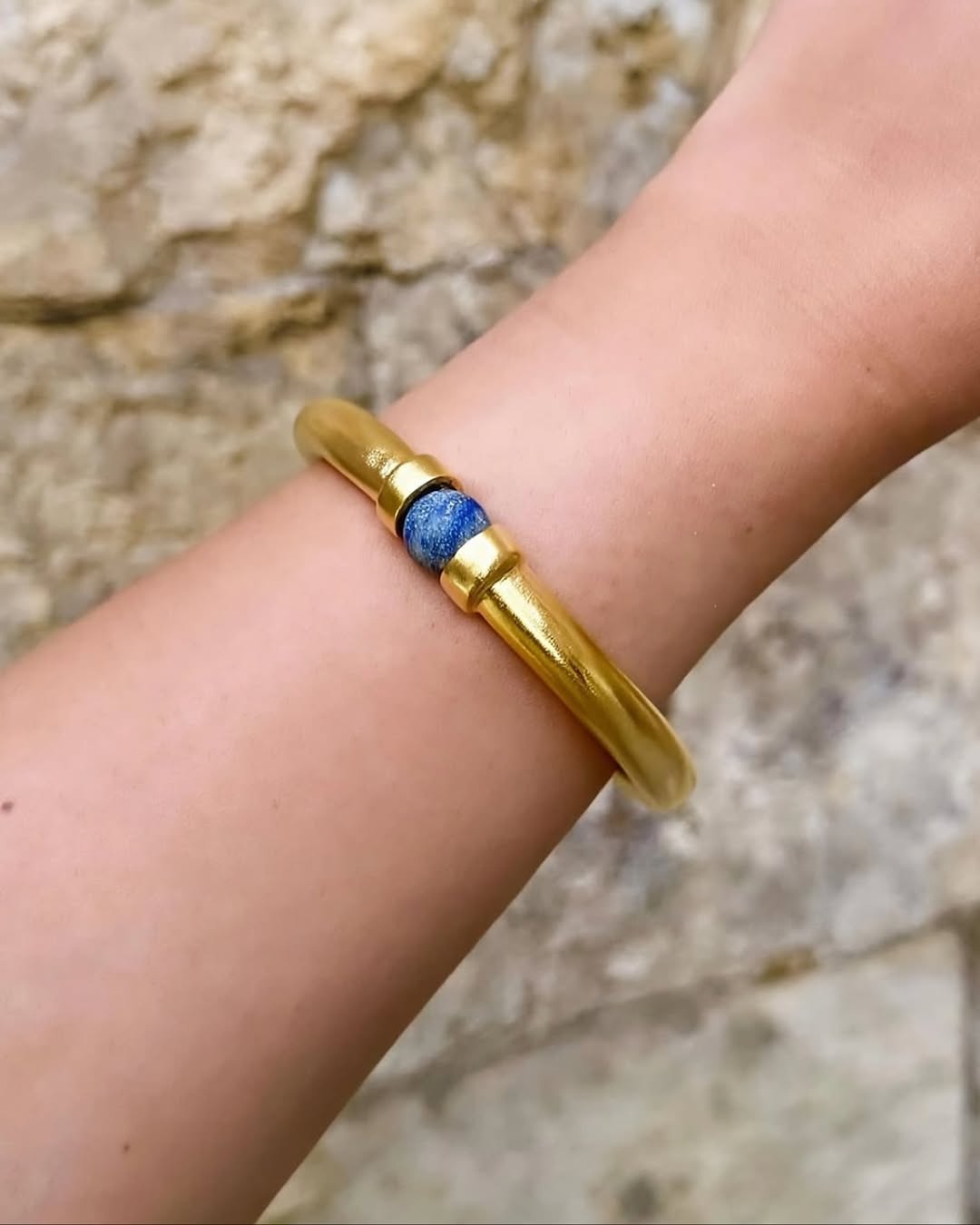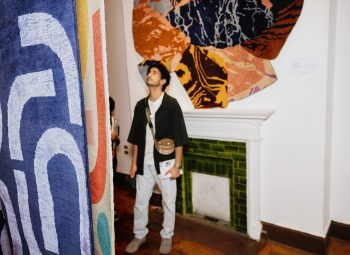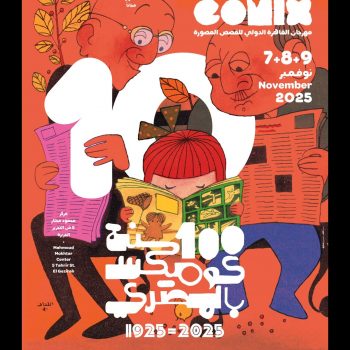Images via Mariam George Designs
The theft of a 3,000-year-old bracelet from the Egyptian Museum in Tahrir shocked many, but for jewellery designer Mariam George, it became the spark for an extraordinary project. Determined to keep its memory alive, she recreated the piece using copper plated with gold and striking blue stones, echoing the beauty of the original artefact.
Keeping History Alive
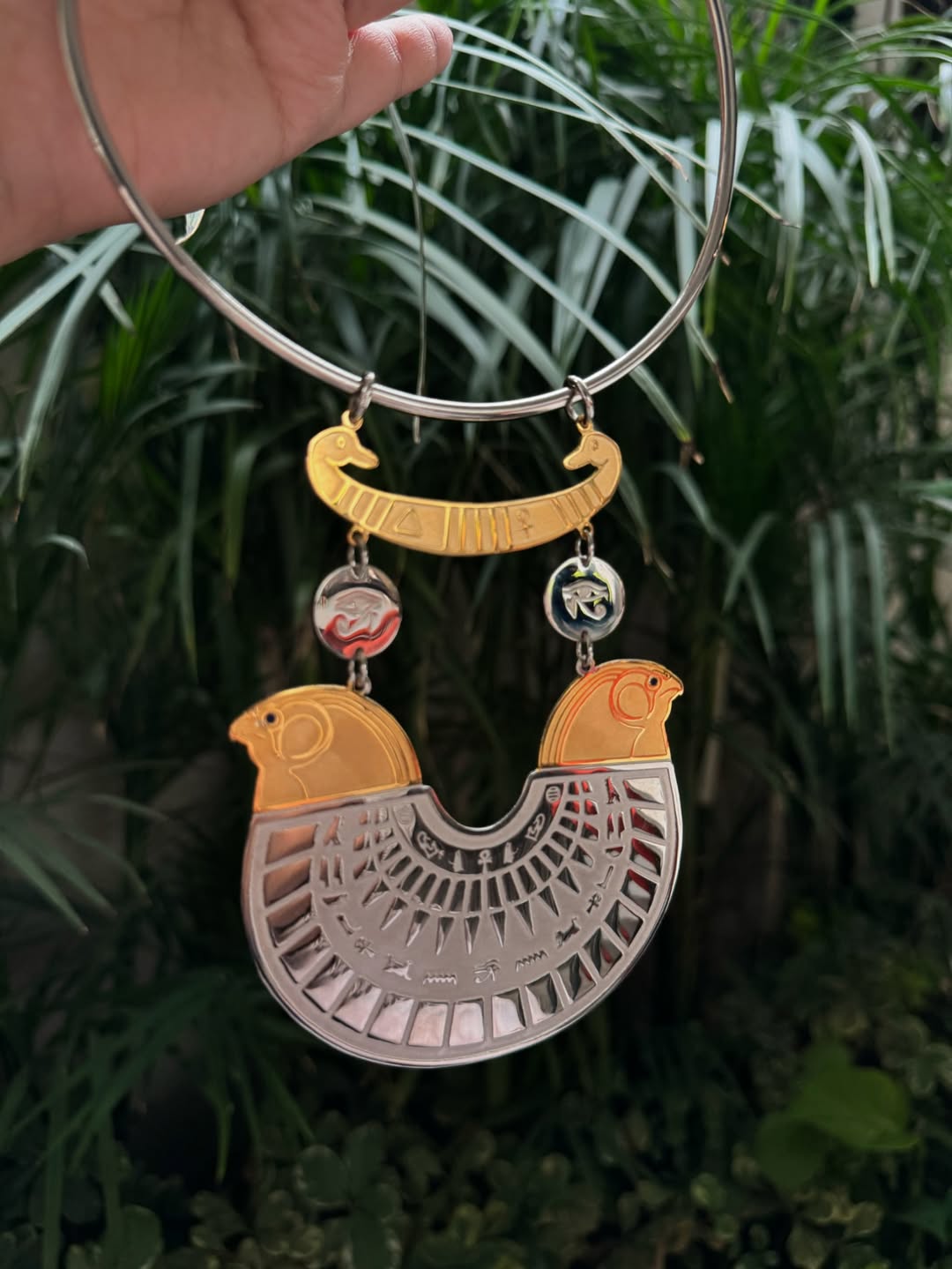
Mariam, a graduate of Helwan University’s Faculty of Art Education, has always specialised in designs rooted in Egyptian identity. For her, the theft was more than a crime; it was an erasure of heritage. The bracelet, linked to King Psusennes I, was priceless. By crafting a model close to the original, she aimed to ensure that new generations would remember its story.
A Demanding Process
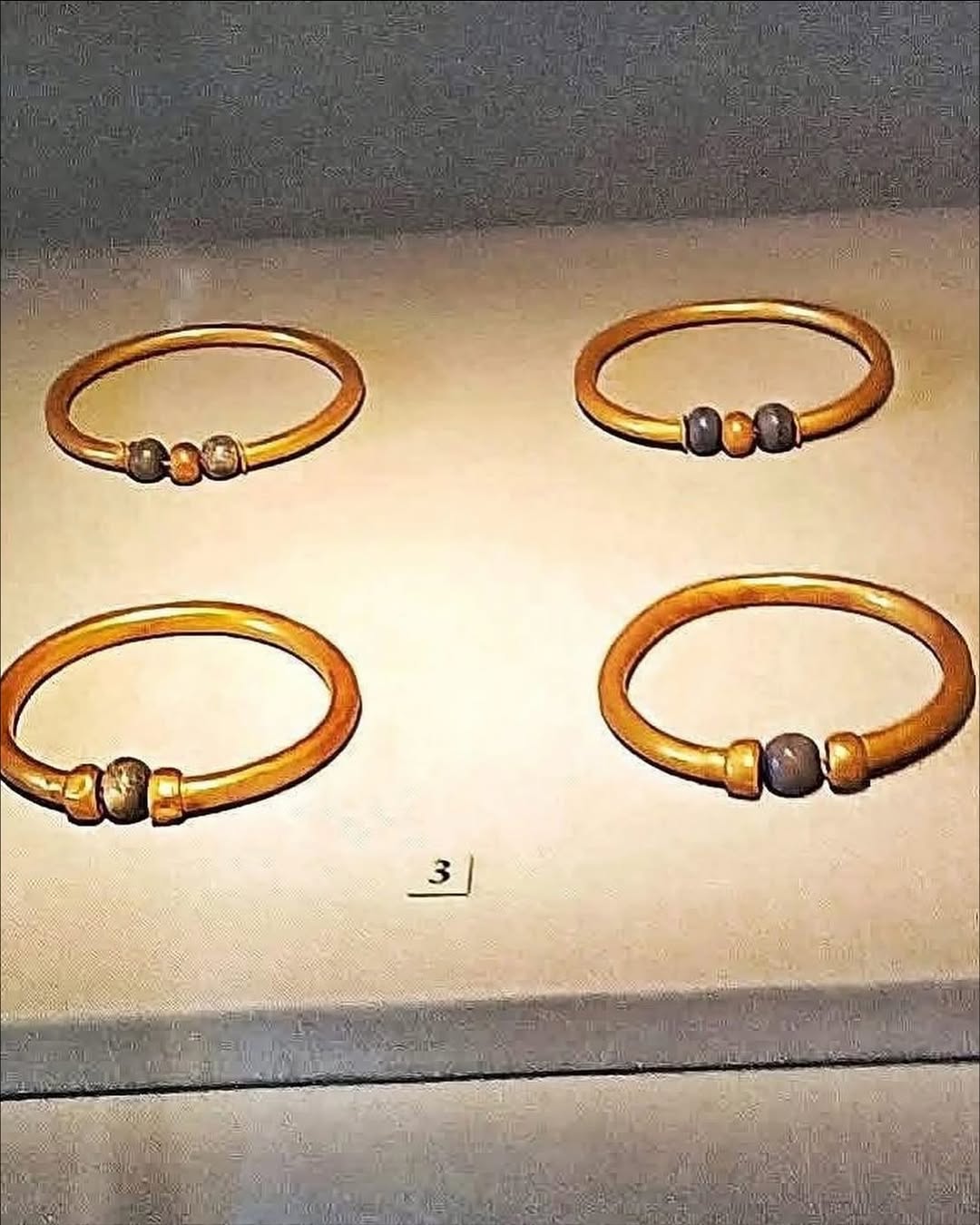
Reproducing the bracelet proved to be far from easy. Mariam began by sketching the design, then carefully adjusted the stone to fit the curve of the bracelet. Hours were spent on polishing, refining, and assembly. She noted that despite today’s advanced tools, the task reminded her of the mastery of ancient craftsmen who achieved perfection with limited means. Her goal was not just to make a copy, but to create a balanced, lifelike piece that honoured the original.
Materials With Meaning
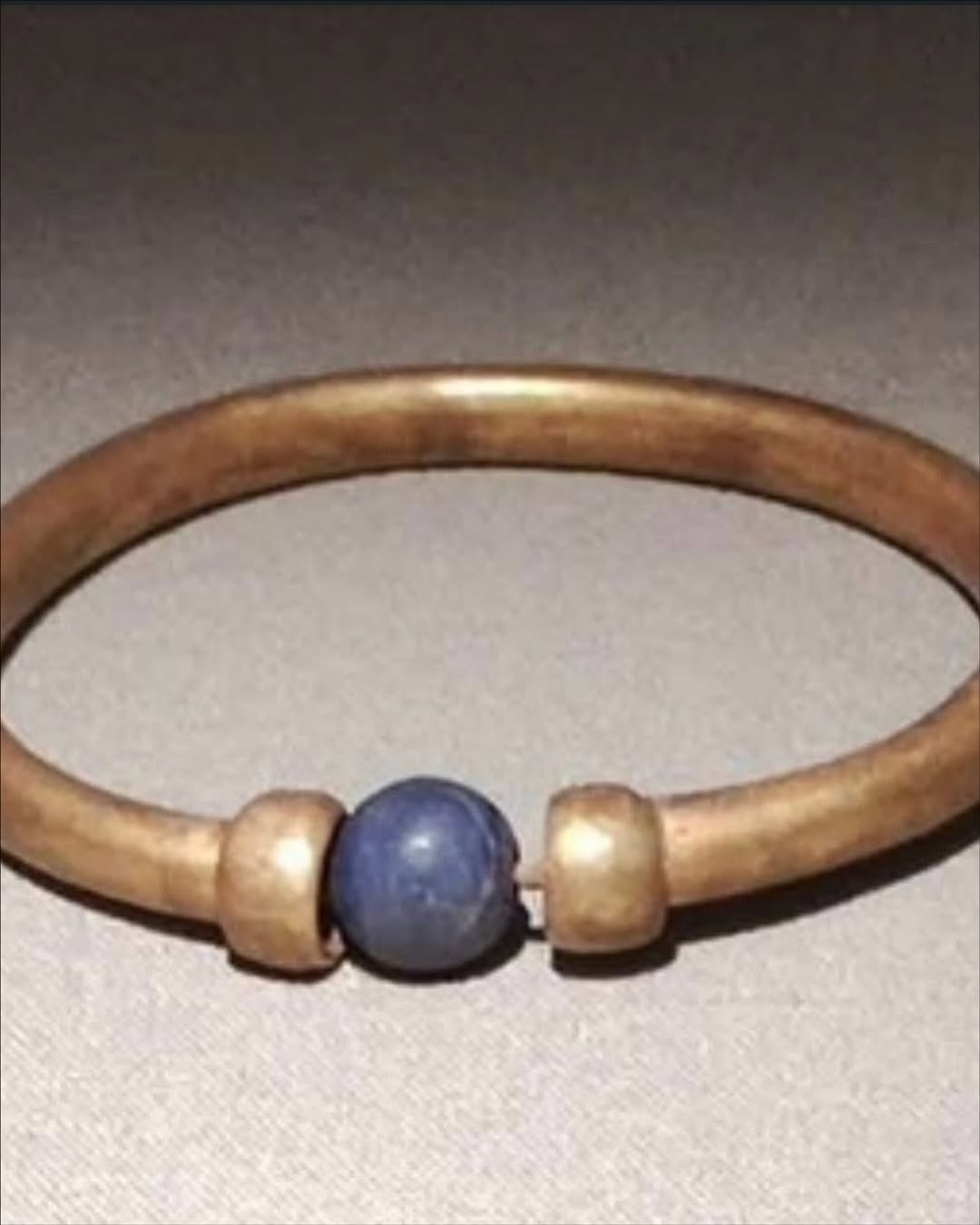
Mariam selected copper for its historic value, explaining that it was widely used by the ancient Egyptians. To protect it from oxidation, she coated it with gold, which can be reapplied over time. For the centrepiece, she used a deep blue stone, lapis lazuli—a gem once treasured by pharaohs—which added both symbolic and aesthetic depth to her work.
A Labour of Love
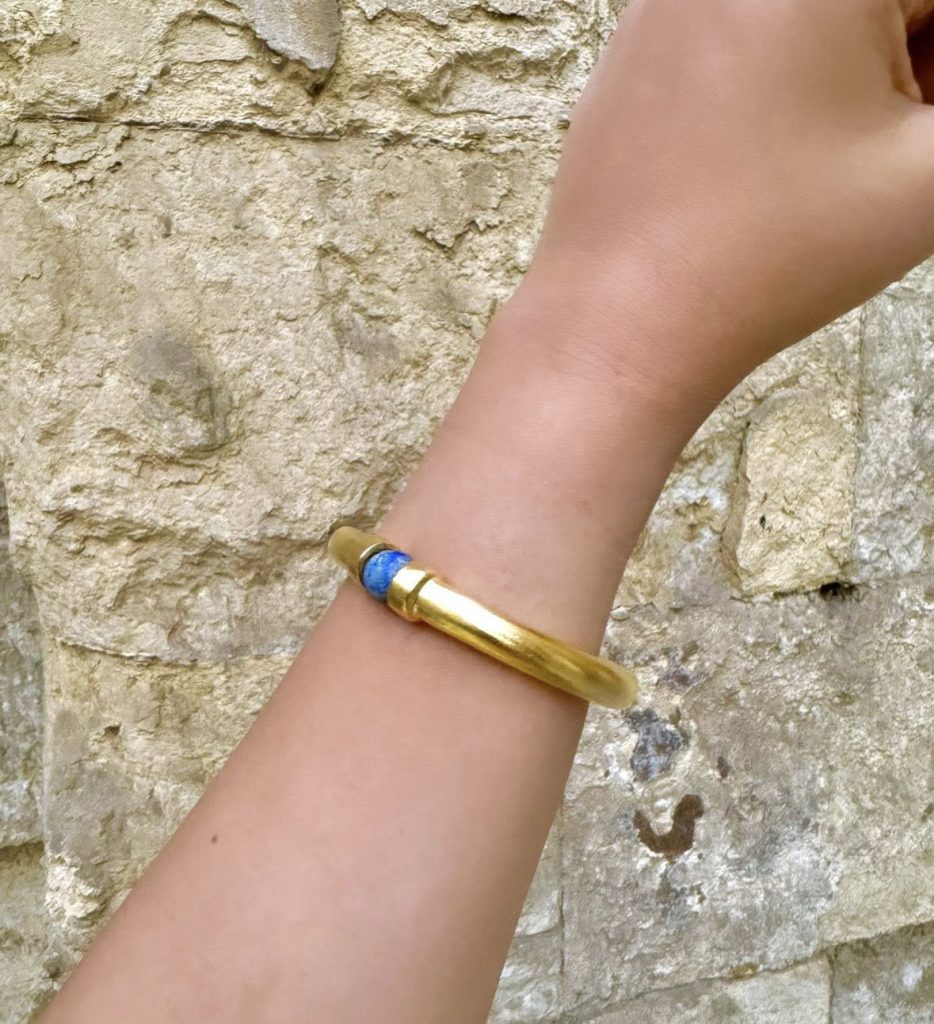
Mariam insists her project was never about profit. “I want people to feel they haven’t lost something,” she said. To her, the piece is a symbolic tribute, a way of preserving Egyptian identity and reminding people of the genius of their ancestors.
Looking Ahead
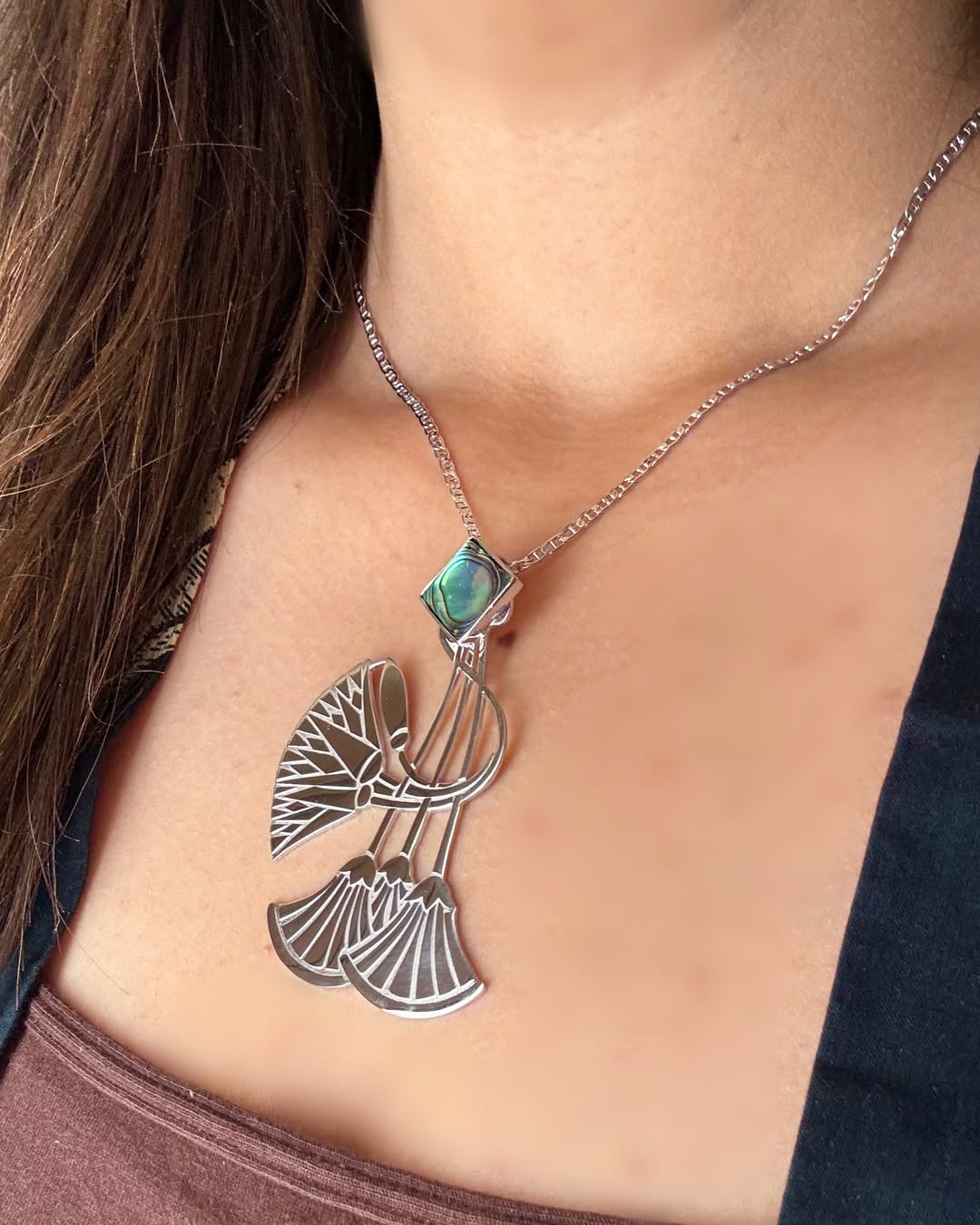
Encouraged by this project, Mariam now plans to study and recreate other lost treasures. Her portfolio already features pieces inspired by ancient Egyptian and Nubian culture, proving that design can be a powerful tool for preserving history.

